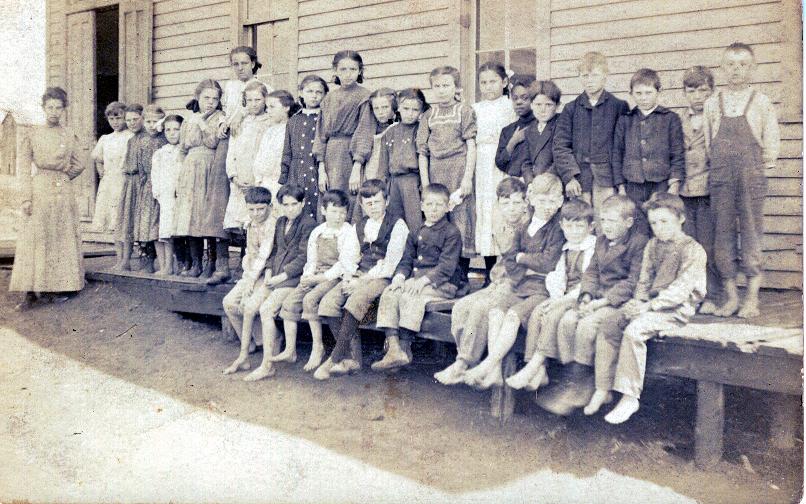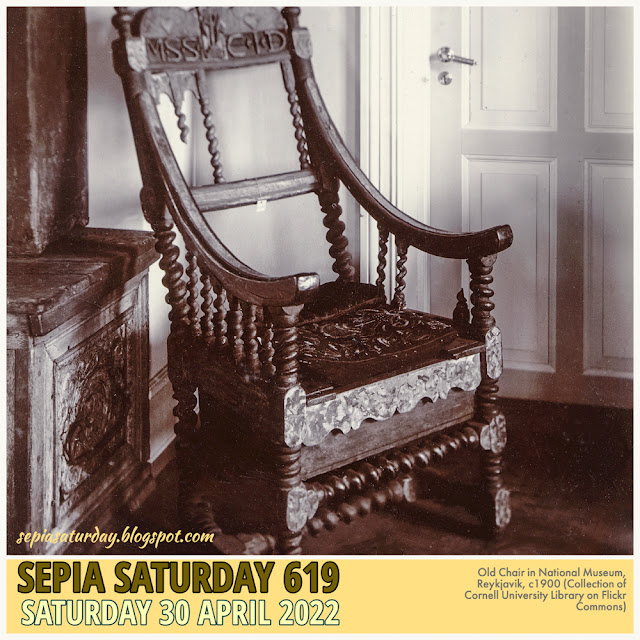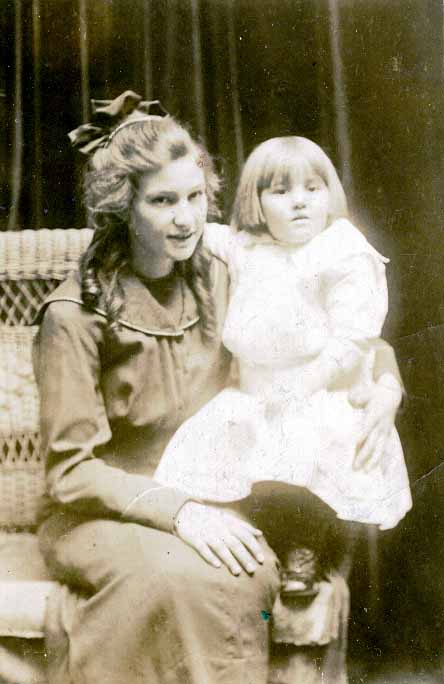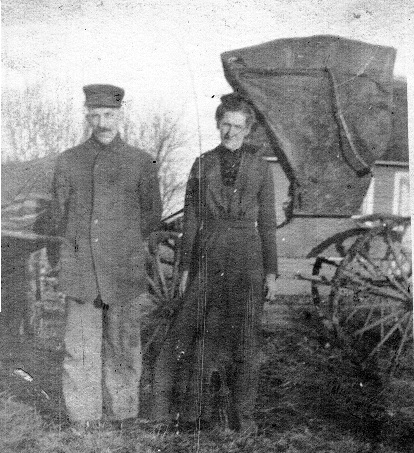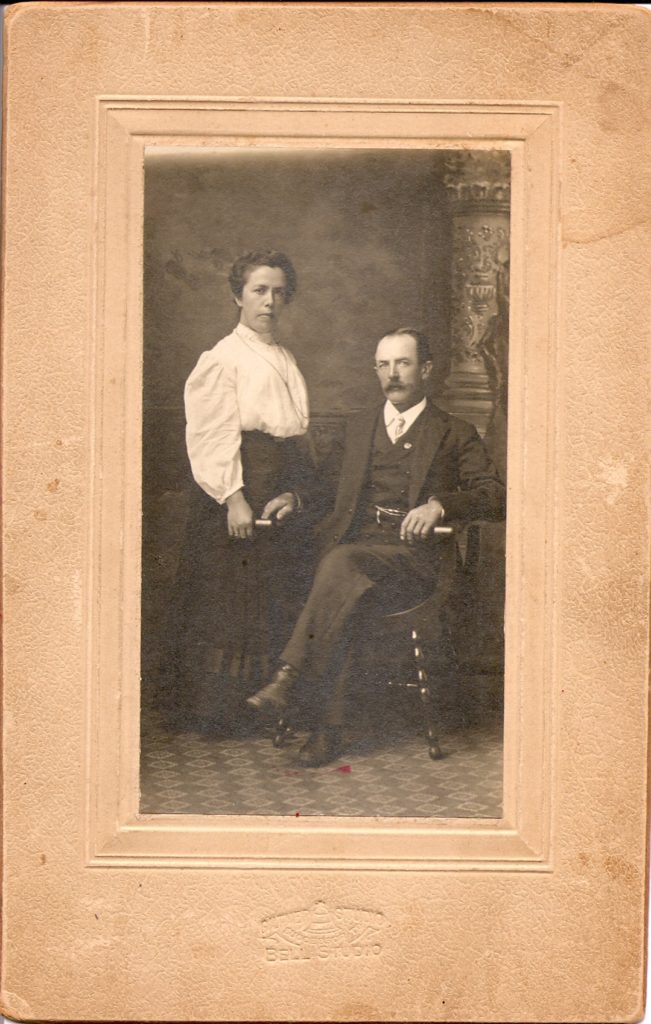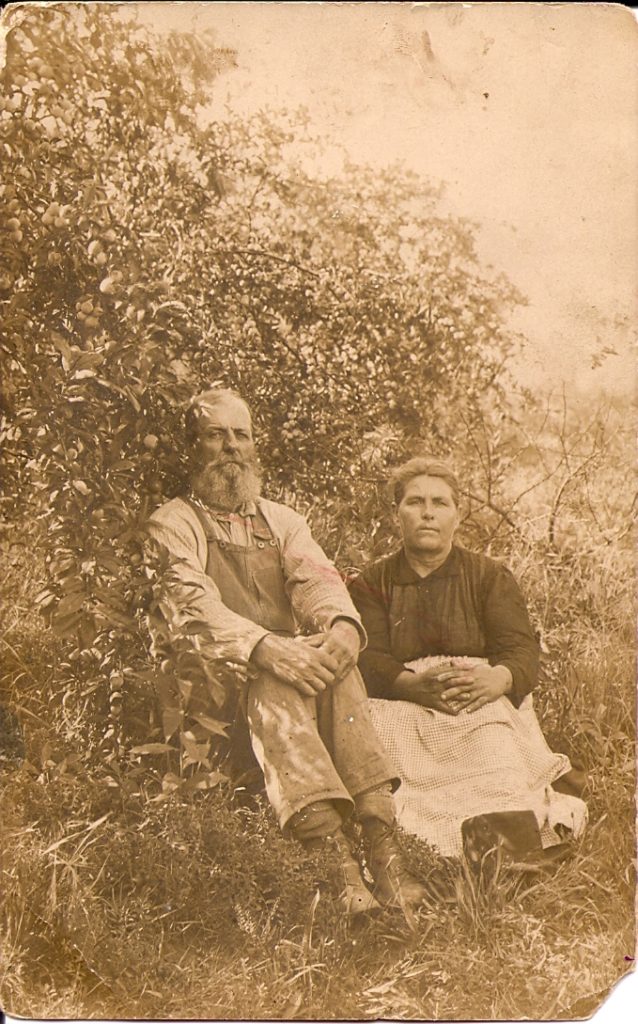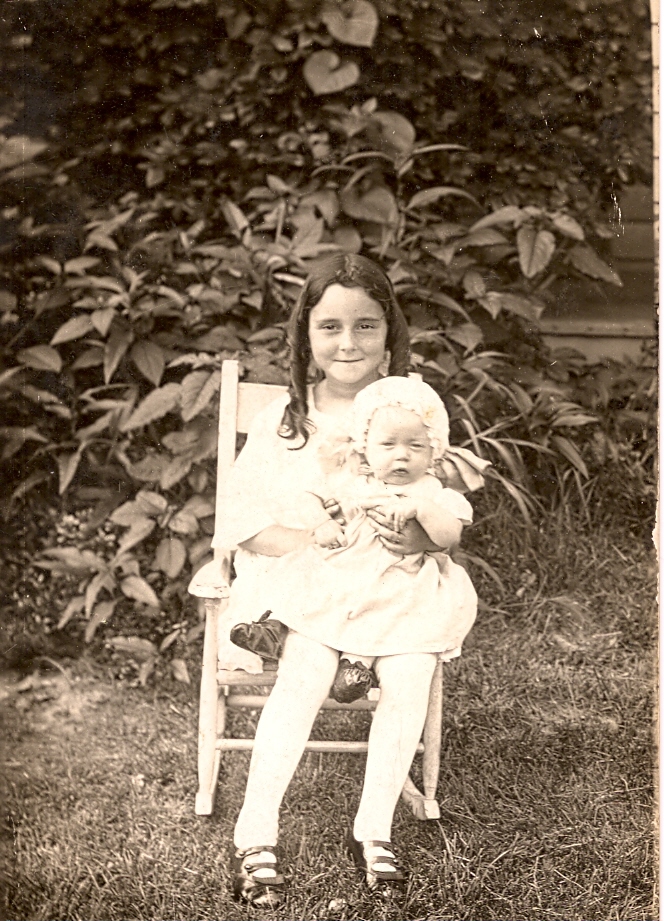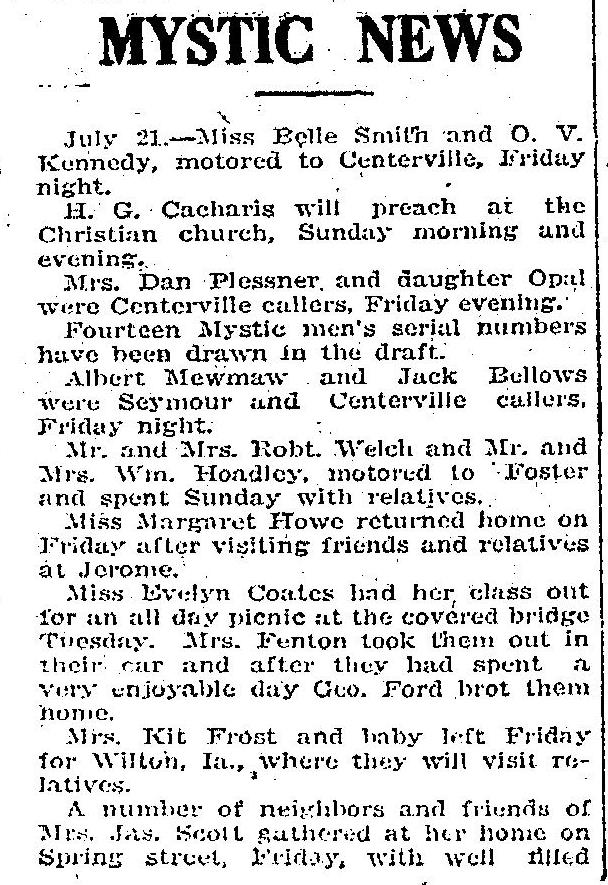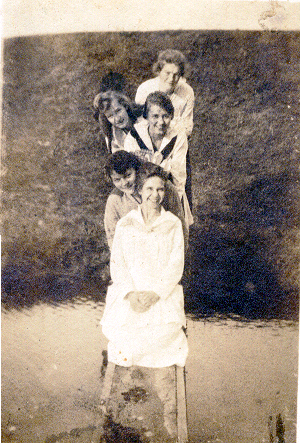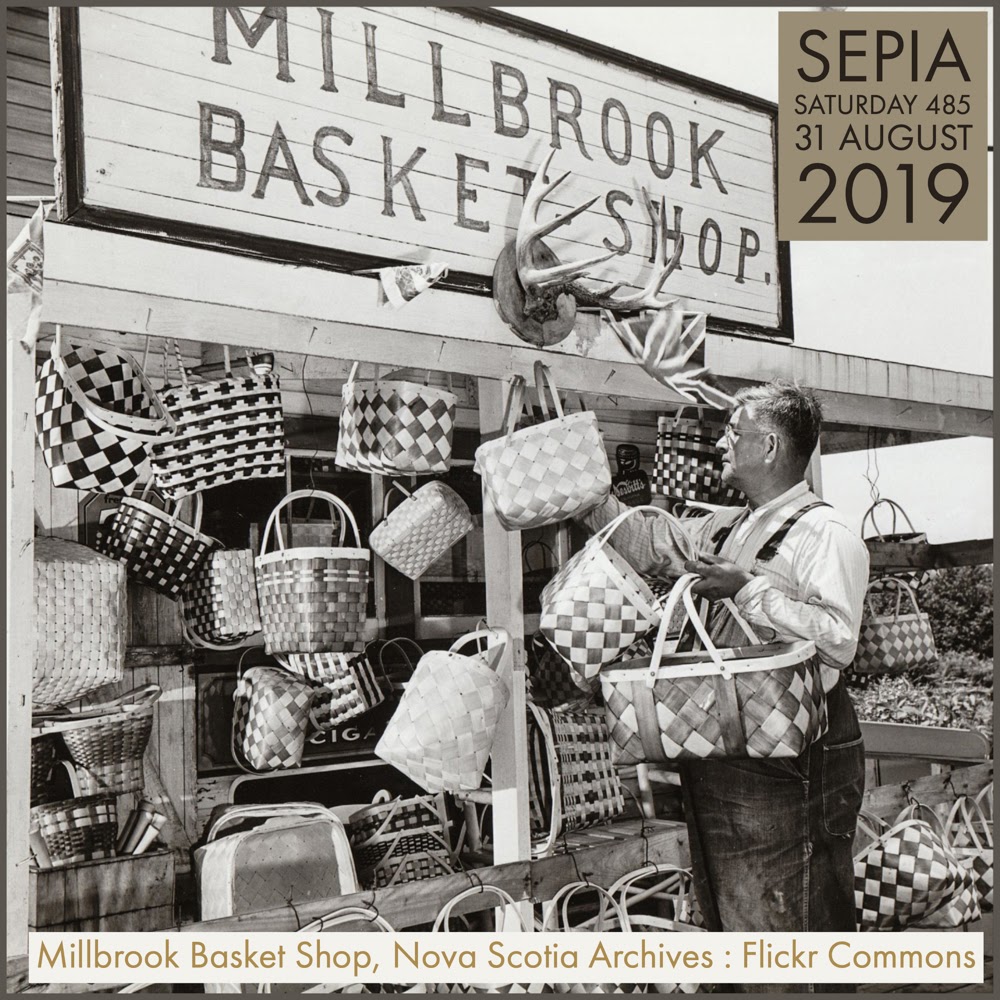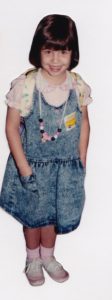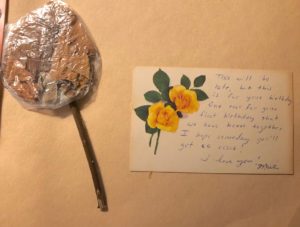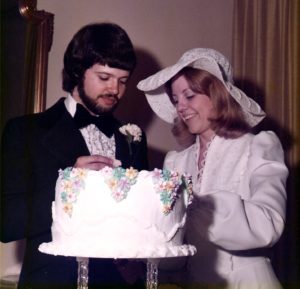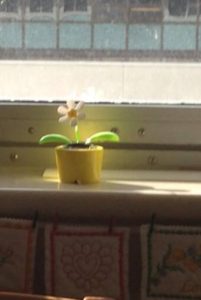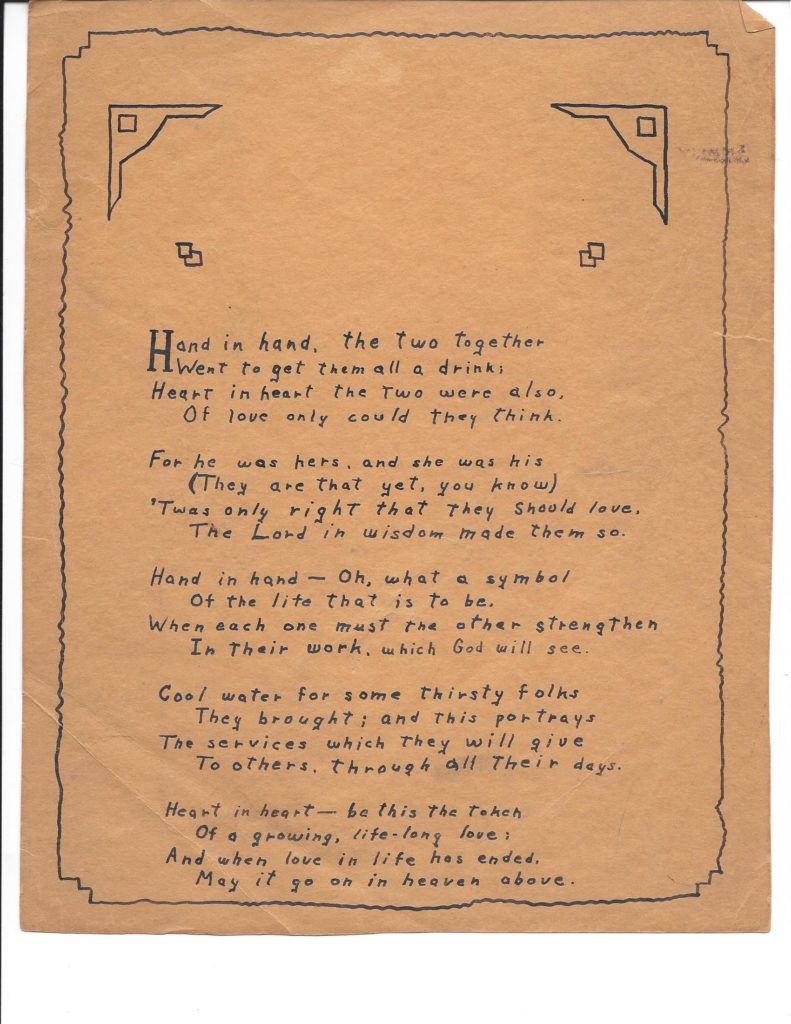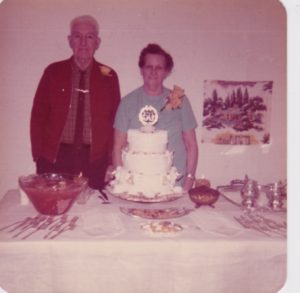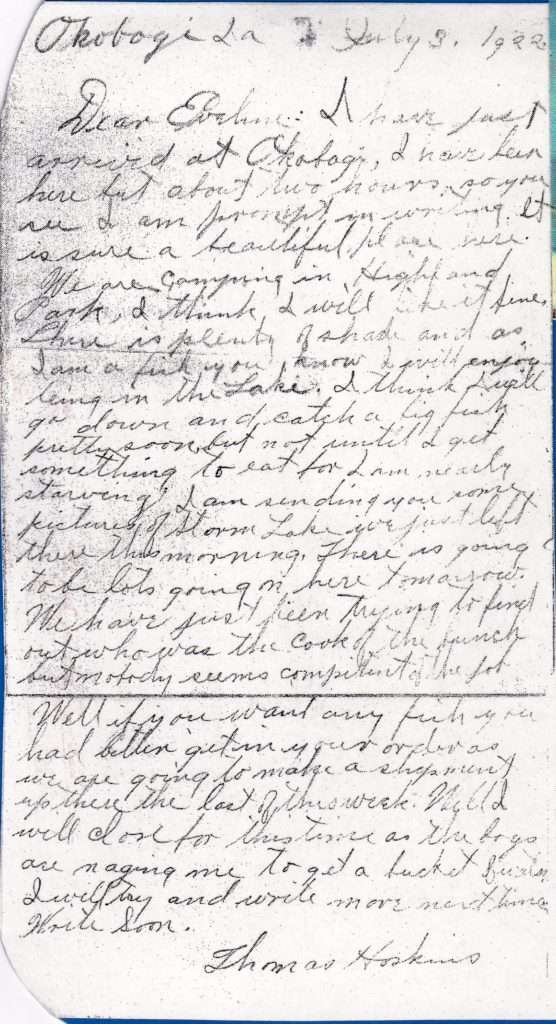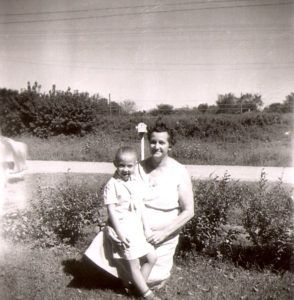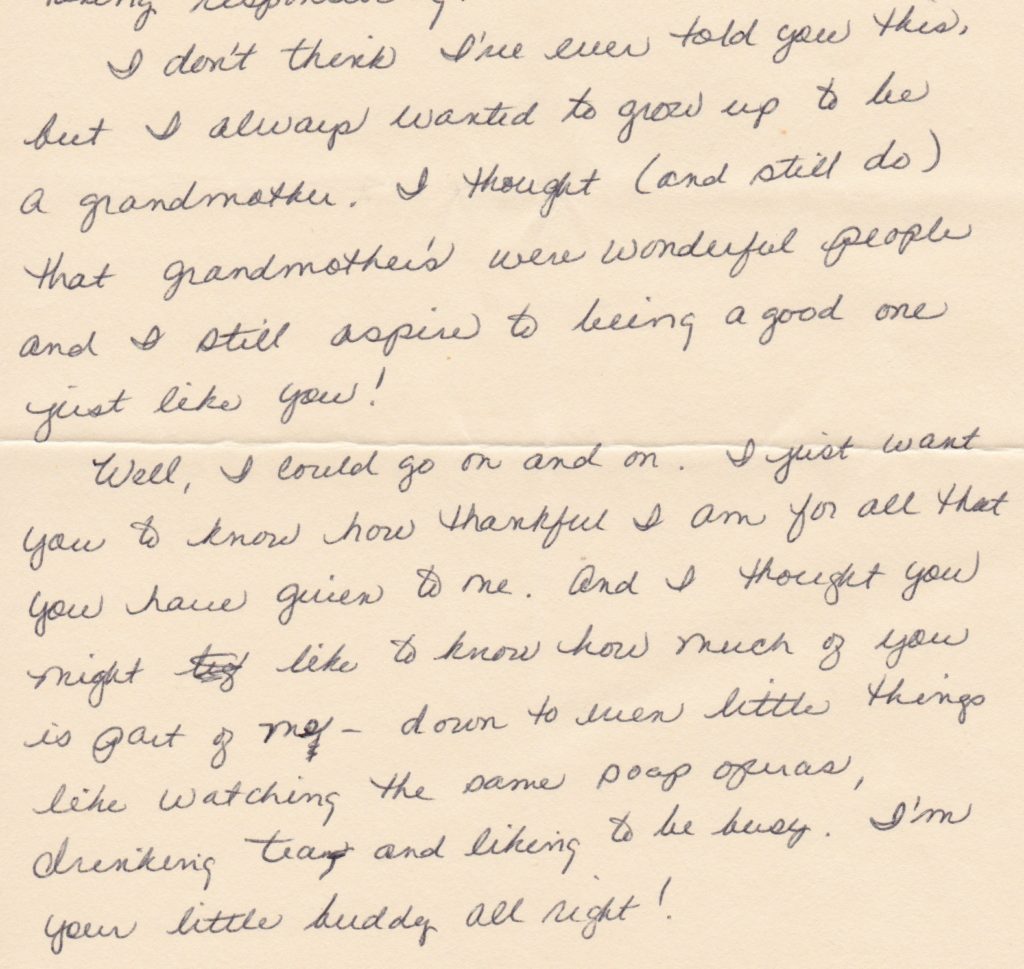I shared a photo of my grandmother Eveline Coates’ high school graduating class in Mystic, Iowa a few weeks (now months!) ago. Along with the photo and her diploma, a couple of other mementos were saved. One is the program for the Junior-Senior Banquet in honor of the graduating Seniors. It was interesting to see how World War I seemed to be the overarching theme of the festivities. I decided to take a deeper look at what her life may have been like during the 1917-1918 school year. There was a lot going on, a war and the beginning of an influenza pandemic to name the two biggies. The list of related posts is getting long, so I’ll link them at the bottom.
I was in the middle of writing what I knew was the next post in this series. I was doing a little newspaper research for that post when I found something at about 11:00 Saturday night (the day I had hoped to post it!), not for the post I was writing, but something I needed for the previous post.
Sometimes search terms bring us what we are looking for. Sometimes we use all the search terms we can think of in all possible configurations and spellings, with and without quotations marks … and come up empty. As I read this information that arrived too late, I sat back in my chair, no amusement on my face. Now? Really? I needed you weeks ago.

My previous post was about my grandmother and the Mystic High School Senior Class Play. I wrote things like:
And who played the parts of Alec Fraser, a young author married to Edna.
Charles Ramsey, a friend of the family, who is responsible for “Jim.”
and James Barry, friend of Charles, who is willing to do a lot for Vivian?If only Eveline lived in Centerville, the county seat, rather than Mystic. The newspaper listed all of the students and the parts they played in the Centerville senior class play and many more details for other senior events as well.
I was unable to find any details about Senior Class night, which occurred the night before commencement. I can only guess that it was a party atmosphere to celebrate their last night together as classmates.
Trying to finish the post I was working on, I searched for the name Lodwick, the surname of one of Eveline’s classmates, who was mentioned in the Junior-Senior Reception program.
And there it was – the names of the students and what parts they played. Unfortunately, I still can’t identify any of the students in the class photo except for Alice Tingle, who would one day be Eveline’s sister-in-law.
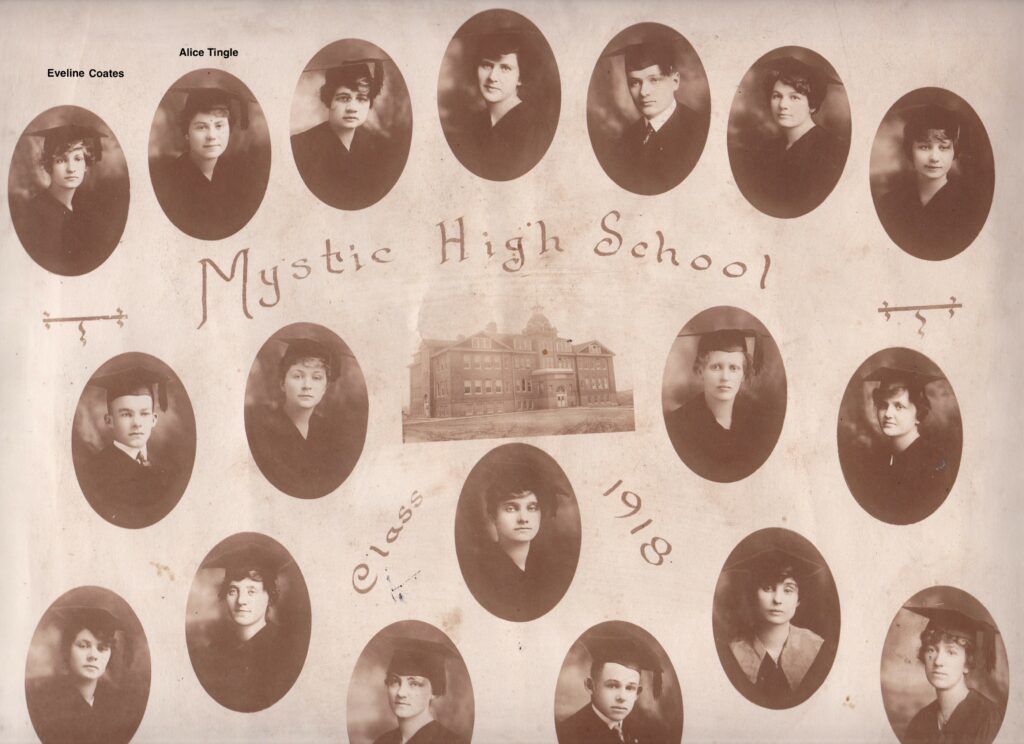
But look at the last paragraph in the clipping: “The other Seniors will present ‘Georgia’s Wedding Gown’ or ‘Who’s to Inherit?’ on class night.” So … those who didn’t have a part in the Senior Class Play “Why Not Jim?” would not be left out completely. But which play did they perform? And could I find a copy of the play or at least some information about it? I found a reference to the play “Who’s to Inherit?” on the internet, but I could never find “Georgia’s Wedding Gown.”
I went back to the local newspaper again, trying several search terms. What finally worked? “Gown”. And there it was.
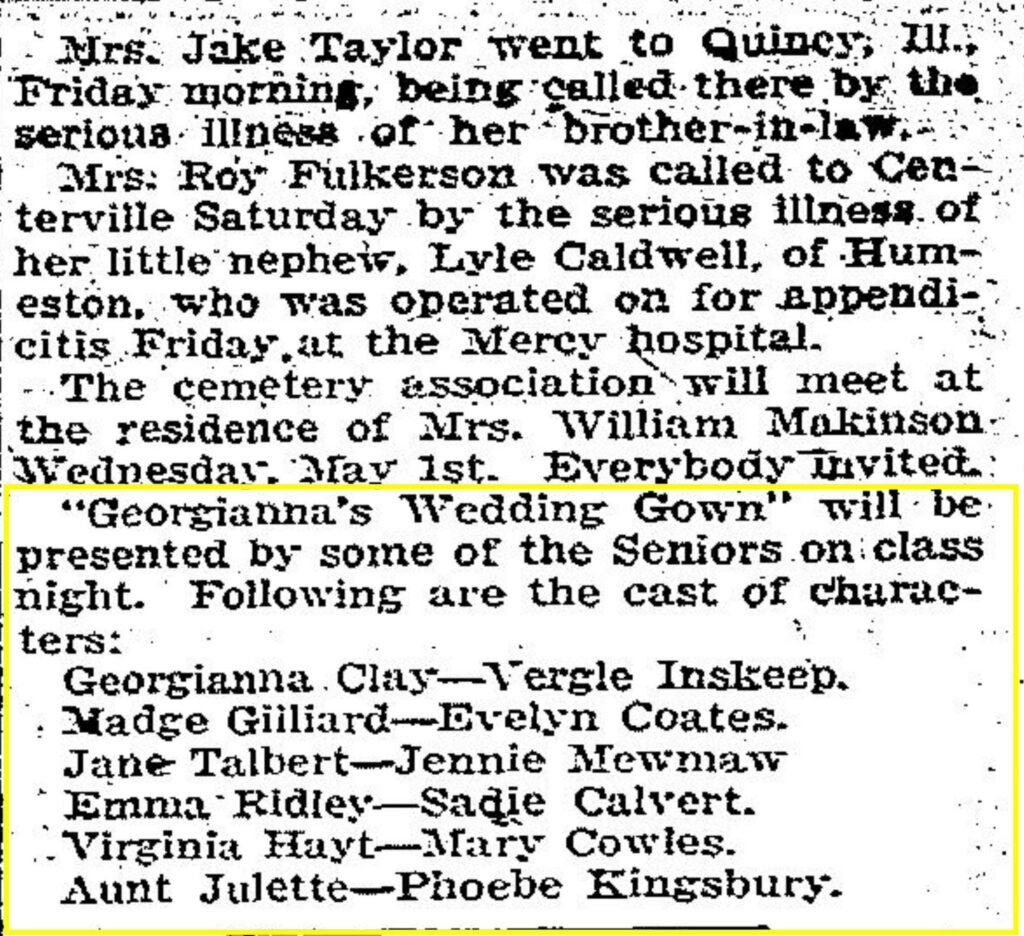
“Georgianna” had been misspelled as “Georgia” in the first article. Ah well. I found it.
So grandma Eveline played the part of Madge Gilliard in the play “Georgianna’s Wedding Gown.” The play, by author Bell Bayless, is described in a 1914 booksellers newsletter as “a farce in two acts” and the publisher as “Dick & Fitz,” which I eventually learned was Dick & Fitzgerald.
I was about to give up locating a copy of the play when I finally found it by searching the name of the character Grandma played, Madge Gilliard. I almost wish I hadn’t. Sometimes ignorance is bliss.

In this series, I’ve written about The Red Cross, smallpox, coal mining, food conservation, immigration, the draft, Eveline’s family, and more. One thing I did not delve into was race. The “gift” of locating the play Grandma was in compels me to acknowledge this influence on Grandma’s life as well.
The first hint of where this might lead was finding a Wikipedia entry about the publishing company, Dick and Fitzgerald.
Eric Lott cites them as one of the leading publishers circa 1850 of songbooks (typically just lyrics, not melodies) of the popular blackface minstrel songs of the time, which he characterizes as “little lyric volumes of mass-produced racist caricature.”
https://en.wikipedia.org/wiki/Dick_%26_Fitzgerald
Sigh.
There were not many black families in Appanoose County at the time and I read somewhere along the way that a number of them had been recruited from Missouri or other parts south to work in the coal mines. What the men who moved their families to Appanoose County did not know until they showed up for work was that they had been recruited and hired as strikebreakers. Scabs. They did not receive a warm welcome.
In one class photo of Eveline in elementary school, there is one black girl in the picture of about thirty children.
There are no black teens in the 1918 Senior Class photo. Eveline wrote an autobiography as a school assignment when she was about sixteen. In it she wrote:
After spending four years of delightful work and play here, I started on my way to the Central Ward. The children there were strangers to me and there were so many that for some time I was afraid to try any pranks and when I got over this feeling, I was told that I was old enough to act like a lady. Well I did, for it wasn’t but a few days later, when with some of the other girls I found myself in a big quarrel with some colored girls. That afternoon the professor for some reason or other kept coming into the room and it was with a sigh of relief that we marched out of school that night without even a scolding.
Grandma did not share details of what the quarrel was about.
Back to the play …
The setting of the play is the home of Madge Gilliard, a young, single woman of about 20. Her parents are out of town. Georgianna is a servant in the home. The time of the play is noted as “the present,” and since the play was written in 1914, this production in 1918 was representative of the present.
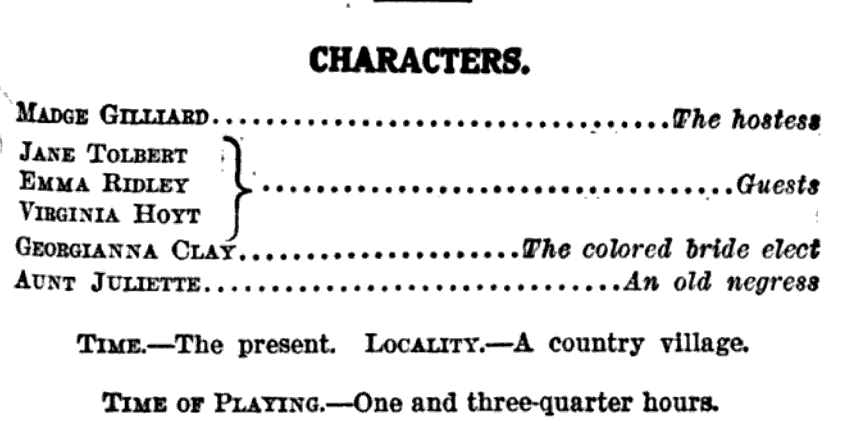
Costumes, characteristics of the characters, props needed, and stage directions.
The gist of the play is that Georgianna hopes to marry her beau right away, but doesn’t have a white gown to wear. She took her aunt’s funeral shroud, but it was eaten by a calf when she set it out to dry. At Madge’s house, she takes a white dress and hat out of the closet while she is cleaning and wants to buy them from Madge, but Madge does not want to part with them. Madge and her guests decide to make a wedding gown for Georgianna.
Nice enough story.
But the play features racist caricatures and language and the black characters speak in distorted Black language. The lines for Grandma’s character include “that” word as well as others.
I have questions.
Who chose this play rather than Who’s to Inherit?, the other play considered? That play has no black characters or racial stereotypes.
Did the students vote?
Did the teacher in charge select it?
Did students think it would be a test of their acting chops to play characters unlike themselves?
Did anyone have reservations about anything in the play?
Did the students perform in blackface?
I can guess, but obviously can’t answer any of my questions. I can only point to the popularity of minstrel shows and entertainment of this nature at the time. The frequent carnivals that came to Appanoose County usually included a minstrel show. I remember finding a newspaper clipping several years ago about a minstrel show performed at church – the Methodist Church – if I remember correctly. And by 1920, the KKK was gaining a foothold in Appanoose County. The editor of the Centerville newspaper apparently put up quite a fight with them.
Under Jesse Beck, The Iowegian waged a fierce — and ultimately successful — fight against the Ku Klux Klan in southern Iowa, where the KKK had gained a foothold that modern Iowans would find astonishing. The paper editorialized against the KKK on its front page and faced reprisals from Klan supporters, Mills told us.
https://www.carrollspaper.com/opinion/centerville-iowegian-newspaper-that-fought-kkk-in-1920s-goes-down-to-coronavirus-in-2020/article_e5856890-9920-11ea-b44b-7fbd1fe848b7.html
I have struggled to find words to close this post, but none that seem fitting have come to me. I was sad and disheartened to read the play and to imagine Eveline and her classmates performing in it and being entertained by it … for Senior Class Night, no less.
As for Eveline, her interactions with people of color were limited by the part of the country where she grew up and lived out her life. I never heard her speak the words that she apparently delivered in the play and I never heard her disparage anyone because of the color of their skin or ethnicity. But just as patriotism, frugality, and service were heavy in the air in 1918, so was racism. Young Eveline lived and breathed an environment that unquestionably influenced her and her classmates. As we all do.
I wish I could ask Grandma about that play.
Maybe I don’t know how to finish this post because it is an unfinished story. I wish we could say that our racist past is all in the past, but we know it is not. The past remains with us – sometimes blatantly obvious, but often unrecognized, unacknowledged, and exerting more influence than we are willing to recognize.
A series of search terms to tell a simple story delivered a hit.
This is my very late response to Sepia Saturday for October 22.
If you would like to read other posts about Eveline’s Senior Year, you can find them here:
Eveline’s Senior Year, Part 1
Eveline’s Senior Year: The Draft and a Carnival
Eveline’s Senior Year: A Look Around Town
Eveline’s Senior Year: Musical Notes
Eveline’s Senior Year: Smallpox
Eveline’s Senior Year: What are you Serving?
Eveline’s Senior Year: Root Beer on the 4th
Eveline’s Senior Year: Miners, Miner and Maps
Eveline’s Senior Year: The Weight of Mining
Eveline’s Senior Year: Gatherings and Gossip
Eveline’s Senior Year: Knit Your Bit
Eveline’s Senior Year: In Search of a Back Story
Eveline’s Senior Year: Sign the Food Pledge
Eveline’s Senior Year: Produce, Preserve, Conserve
Eveline’s Senior Year: Graduation Memorabilia
Eveline’s Senior Year: Baccalaureate
Eveline’s Senior Year: Senior Class Play


